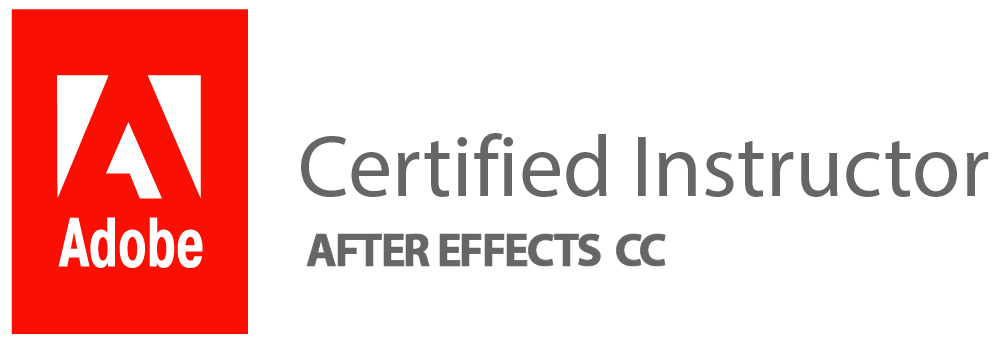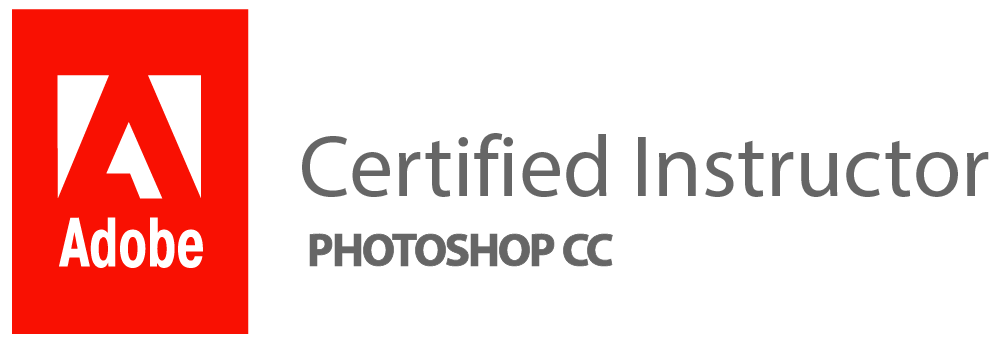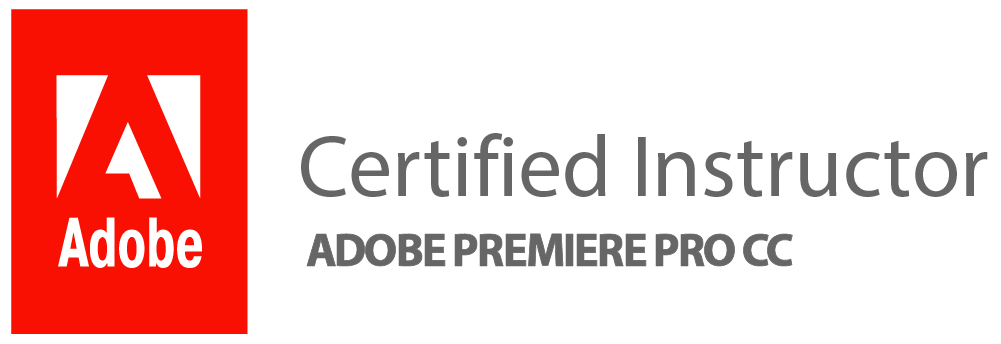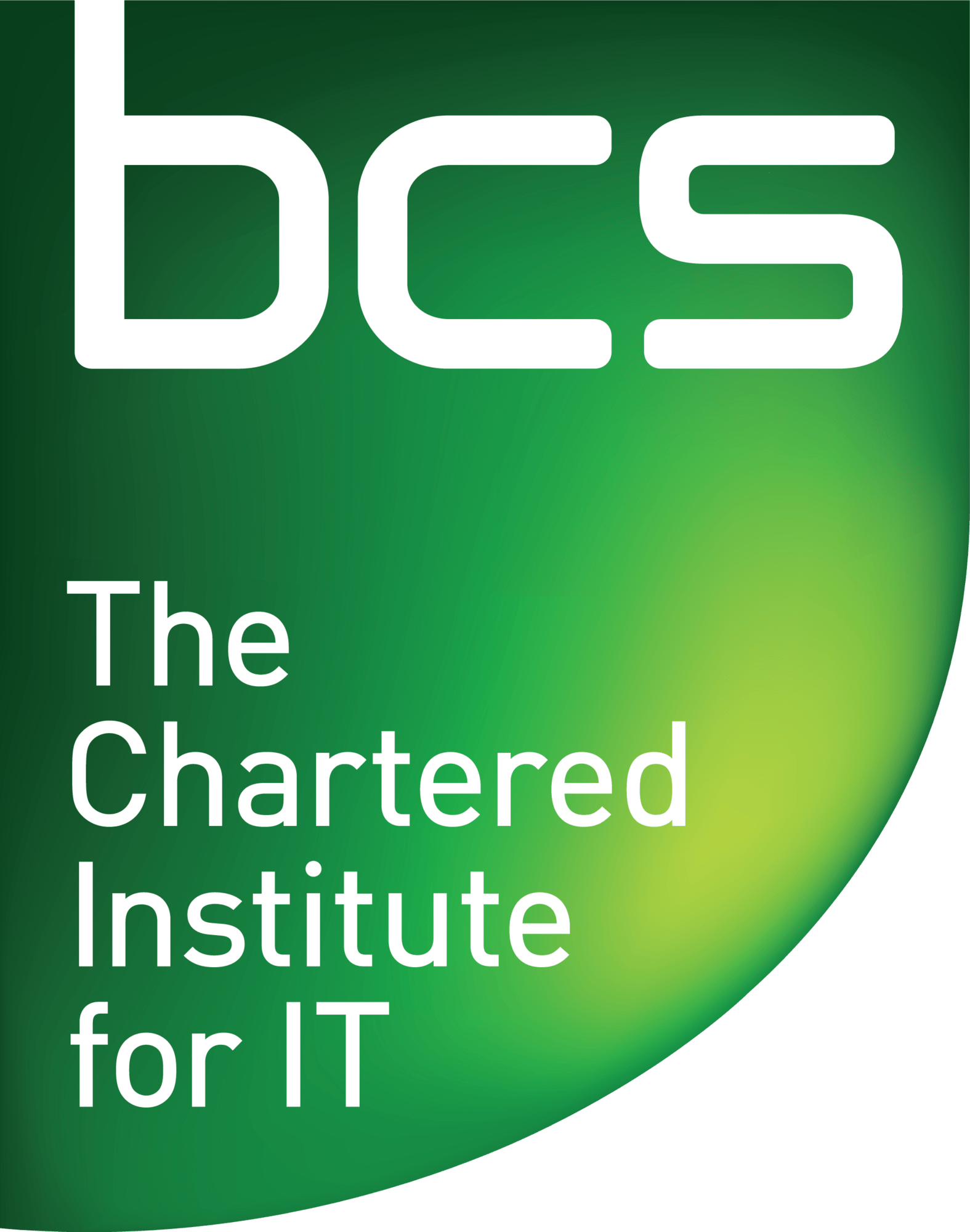What Are The Qualities Necessary For A Digital Artist?
In a graphic design course, you will study a variety of topics that are essential for developing your skills in this field. One of the fundamental areas of focus is learning about the principles and elements of design. This includes understanding concepts such as balance, colour theory, typography, composition, and space.
Another important aspect of a graphic design course is gaining proficiency in using various software tools and applications. You will learn how to use industry-standard software like Adobe Photoshop, Illustrator, and InDesign to create digital graphics and manipulate images. Additionally, you will learn about different file formats and their appropriate uses.
Furthermore, a graphic design course will also cover topics related to branding and logo design. You will explore how to create visually appealing logos that effectively communicate the essence of a brand or business. This involves understanding the psychology behind colours and symbols used in logo designs.
Overall, studying graphic design encompasses learning both theoretical knowledge and practical skills necessary for creating visually engaging designs across various mediums.
Foundations of Graphic Design
In a graphic design course, students study the foundations of graphic design, which provide them with a strong understanding of the principles and elements that form the basis of this discipline. These foundations include topics such as colour theory, typography, layout design, and composition. By learning about colour theory, students gain knowledge on how different colours interact with each other and how to create harmonious colour palettes for their designs. Typography explores the art and technique of arranging type in an aesthetically pleasing manner while effectively conveying information.
Layout design focuses on organizing various visual elements within a given space to create visually appealing compositions. Students learn about grids, alignment, hierarchy, and balance to create well-structured layouts that communicate messages clearly. Composition delves into the arrangement and placement of visual elements to achieve balance and harmony in a design. It involves understanding the rule of thirds, focal points, negative space utilization, and visual flow.
By studying these foundational aspects in a graphic design course, students develop a solid grounding in the fundamental principles that guide successful graphic design work. This knowledge forms the basis for creating visually impactful designs across various mediums, such as print media, digital platforms, advertising campaigns, branding materials, and more.
Typography and Layout
In a graphic design course, you will study typography and layout extensively. Typography refers to the art and technique of arranging type in order to make written language visually appealing and readable. It involves selecting appropriate fonts, sizes, spacing, and alignment to convey a specific message or evoke a particular emotion. Understanding the principles of typography is crucial for designers as it can greatly impact the overall aesthetics and readability of any design project.
Layout, on the other hand, focuses on how different elements are organized within a design composition. It involves considering factors such as balance, proportion, hierarchy, and grid systems to create visually pleasing designs that effectively communicate information. A well-designed layout helps guide the viewer’s eye through the content in a logical manner while maintaining visual harmony. By studying layout techniques, students learn how to create effective visual hierarchies that prioritize important information and establish strong focal points within their designs.
Overall, typography and layout are fundamental aspects of graphic design that play a significant role in creating visually appealing and communicative designs. Through studying these subjects in depth during a graphic design course, students gain essential skills that allow them to craft compelling visuals that effectively convey messages across various mediums, such as print materials, websites, advertisements, or branding campaigns.
Colour Theory and Composition
In a graphic design course, one of the key topics that students study is colour theory and composition. Understanding colour theory is fundamental for creating visually appealing designs. Students learn about the different properties of colours, such as hue, saturation, and value, and how they can be combined to create harmonious or contrasting palettes. They also delve into the psychological effects of colours and their ability to evoke emotions and communicate messages.
Composition is another crucial aspect studied in graphic design courses. It involves arranging elements in a design to create balance, hierarchy, and visual interest. Students learn about various principles of composition, such as the rule of thirds, symmetry versus asymmetry, and focal points. They explore how these principles can be applied to different types of designs, including print media, web layouts, and advertising materials.
Overall, studying colour theory and composition helps graphic design students develop an eye for aesthetics and improve their ability to communicate effectively through visual means. These skills are essential for creating impactful designs that capture attention and convey messages clearly.
Digital Tools and Software
In a graphic design course, students learn about various digital tools and software that are essential for their field. These tools include industry-standard software such as Adobe Photoshop, Illustrator, and InDesign. Students are taught how to use these programs effectively to create designs, edit images, and layout documents.
Additionally, they also learn about other digital tools that can enhance their workflow and productivity. This may include project management software like Trello or Asana, which helps them stay organized and collaborate with clients or team members. They may also be introduced to prototyping tools like Sketch or Adobe XD, which enable them to create interactive mockups of their designs.
Overall, studying digital tools and software is crucial in a graphic design course as it equips students with the necessary skills to create visually appealing designs efficiently. By mastering these tools, they can not only produce high-quality work but also adapt to the ever-evolving technology landscape in the field of graphic design.
Branding and Identity Design
In a graphic design course, one of the key areas of study is branding and identity design. This involves understanding how to create and communicate a consistent visual identity for a brand or organization. Students learn about the importance of logo design, typography, colour theory, and other elements that contribute to creating a strong brand image.
Branding and identity design also includes studying market research and target audience analysis to determine the best approach for designing a brand’s identity. Students learn how to conduct competitor analysis, identify unique selling points, and develop strategies for positioning a brand in the market. They also learn how to create comprehensive style guides that outline guidelines for using the brand’s visual elements consistently across different platforms.
Throughout their studies, students are encouraged to work on real-world projects that allow them to apply their knowledge in practical settings. They may have opportunities to collaborate with clients or industry professionals on developing branding solutions. By immersing themselves in hands-on projects, students gain valuable experience and develop a portfolio that showcases their skills in branding and identity design.
Graphic Designer
In a graphic design course, students study various aspects of visual communication and design principles. They learn about colour theory, typography, layout design, image editing software, and graphics creation. Students also gain an understanding of how to effectively communicate messages through visual elements.
Additionally, a graphic design course typically covers the use of industry-standard software such as Adobe Photoshop, Illustrator, and InDesign. Students learn how to manipulate images and create digital illustrations using these tools. They also explore different techniques for creating logos, posters, brochures, websites, and other marketing materials.
Furthermore, students in a graphic design course often engage in hands-on projects that allow them to apply their knowledge and skills to real-world scenarios. They may be required to create branding materials for hypothetical clients or develop designs for specific target audiences. Through these practical assignments, students not only improve their technical abilities but also develop their creative problem-solving skills within the realm of visual communication.
Graphic Designer & Brand Designer
In a graphic design course, students learn various skills and techniques necessary for creating visually appealing designs. They are taught the fundamentals of design principles, such as balance, proportion, colour theory, typography, and composition. Through hands-on projects and assignments, they gain experience in using industry-standard software like Adobe Photoshop, Illustrator, and InDesign.
Furthermore, students also learn about branding and logo design. They study how to create unique brand identities by understanding target audiences, market research, and competitor analysis. This involves developing a strong visual style that represents a company’s values and communicates its message effectively.
Additionally, a graphic design course covers other important topics like web design principles and user experience (UX) design. Students are introduced to the process of designing websites that are visually appealing while being user-friendly and functional. They learn how to create wireframes and prototypes using tools like Sketch or Figma to plan out the layout of web pages before moving on to actual coding.
Overall, a graphic design course provides aspiring designers with the essential skills needed to pursue careers in various creative industries such as advertising agencies, marketing firms or even freelancing opportunities.
Brand Designer & Illustrator
In a graphic design course, brand designers and illustrators learn a wide range of skills and techniques that are essential for their future careers. They study the principles of graphic design, including colour theory, typography, layout composition, and visual hierarchy. These principles help them create visually appealing designs that effectively communicate a brand’s message.
Additionally, students also learn how to use industry-standard software such as Adobe Photoshop, Illustrator, and InDesign. This enables them to manipulate images, create illustrations, and design layouts for various mediums, such as print advertisements, websites, social media graphics, and packaging.
Furthermore, students in graphic design courses also explore the importance of research and conceptualization in the design process. They conduct market research to understand target audiences and competitors before creating sketches or digital mock-ups for their designs. This allows brand designers and illustrators to develop unique concepts that align with the client’s objectives while staying true to the brand identity.
Overall, studying graphic design provides aspiring brand designers and illustrators with the necessary technical skills and creative thinking abilities needed to excel in their field. With a solid foundation in both traditional art principles and modern digital tools, graduates are well-prepared to embark on successful careers in branding agencies or as freelance designers.
What Are The Most Common Mistakes & How Can You Avoid Them When Working On A Graphic Design Project?
In a graphic design course, you will study a wide range of topics that are essential for becoming a successful graphic designer. These include understanding the principles of design, such as colour theory, typography, layout composition, and visual hierarchy. You will also learn how to use various software tools and technologies for creating digital designs and illustrations.
Additionally, you will gain knowledge in branding and logo design, as well as print and web design techniques. You will be taught how to communicate effectively through visual elements by understanding target audiences and creating compelling visuals that convey the intended message.
Furthermore, a graphic design course will often cover topics related to user experience (UX) design and user interface (UI) design. This involves understanding human behaviour and designing interfaces that are intuitive and easy to navigate.
Overall, studying graphic design encompasses both technical skills, like using software programs and creative skills, like conceptualizing ideas and telling stories visually. It is a multidisciplinary field that requires continuous learning to keep up with evolving trends in technology and aesthetics.
What Will You Study At Our Graphic Design School?
In our graphic design school, we offer a comprehensive curriculum that covers all aspects of graphic design. Students will study various subjects, including typography, colour theory, layout design, digital imaging, and illustration techniques. These courses are designed to provide students with a strong foundation in the technical skills necessary for a successful career in graphic design.
Additionally, our program also focuses on developing students’ creative thinking and problem-solving abilities. Through hands-on projects and assignments, students will learn how to effectively communicate ideas visually and develop their own unique style. We also emphasize the importance of staying up-to-date with industry trends and technologies by offering courses that cover topics such as web design, motion graphics, and interactive media.
At our graphic design school, we believe in providing our students with real-world experience. Therefore, we offer opportunities for internships or cooperative education placements where students can apply their knowledge in professional settings. We also encourage students to participate in industry competitions and showcases to further enhance their portfolio and gain recognition within the field of graphic design.
What Do Designers Need To Consider To Use Colour Successfully?
In a graphic design course, one important aspect that students learn is how to effectively use colour in their designs. Designers need to consider several factors in order to use colour successfully. Firstly, they must understand the psychological impact of different colours and how they can evoke certain emotions or convey specific messages. This knowledge helps designers to choose appropriate colours that align with the intended mood or message of their design.
Secondly, designers need to consider colour harmony and contrast. They must learn about different colour schemes, such as complementary, analogous, or monochromatic, and how these schemes can create visual interest and balance in a design. Additionally, understanding the principles of contrast is crucial for creating legible and visually appealing designs.
Lastly, designers should also take into account cultural associations with colours. Colours can have different meanings in different cultures, so it is essential for designers to research and consider these cultural connotations when choosing colours for a global audience.
Overall, studying colour theory and considering factors such as psychology, harmony and contrast, as well as cultural associations, are vital aspects of using colour successfully in graphic design.
Digital Artist
In a graphic design course, aspiring digital artists will study a wide range of subjects to develop their skills and understanding of the field. They will learn the fundamentals of design theory, such as colour theory, typography, composition, and layout. Understanding these principles is crucial for creating visually appealing and effective designs.
Additionally, students will also delve into software programs commonly used in the industry. They will become familiar with popular graphic design tools like Adobe Photoshop, Illustrator, and InDesign. These software programs are essential for digital artists to bring their ideas to life and create professional-quality designs.
Furthermore, a graphic design course may also cover topics related to branding and marketing. Students may learn about creating logos that effectively represent a brand’s identity or developing visual assets for advertising campaigns. Understanding how design plays a role in marketing strategies is crucial for digital artists who intend to work in advertising agencies or branding firms. Overall, studying graphic design equips individuals with the necessary skills and knowledge needed to thrive as digital artists in today’s technology-driven world.
How Do Graphic Designers Select The Right Colours For A Project?
In a graphic design course, students learn various aspects of the field, including colour theory. Understanding how colours work together and the emotions they evoke is crucial for graphic designers when selecting the right colours for a project. They study colour psychology to understand how different hues can influence people’s feelings and perceptions. Additionally, they learn about colour schemes and combinations that create harmony or contrast in designs.
Graphic design courses also cover the use of colour tools and resources that help designers choose appropriate colours for their projects. These tools include colour wheels, swatch books, and online resources like Adobe Colour CC, which provide a vast range of pre-selected colour palettes to inspire designers. Students are taught techniques for creating their own unique colour palettes based on client briefs or design goals.
Moreover, graphic design courses emphasize practical exercises where students practice applying colours effectively in various mediums, such as print layouts, web designs, logos, and branding materials. Through these activities, aspiring designers gain hands-on experience in selecting harmonious colours that enhance visual communication and convey intended messages effectively.
How Do Colour Schemes Affect Branding And Identity Design?
In a graphic design course, students study various elements and principles of design, including colour theory. Understanding how colour schemes affect branding and identity design is an important aspect of this field. The choice of colours in a brand’s logo, website, or marketing materials can have a significant impact on how it is perceived by the target audience.
Colour schemes play a crucial role in creating a brand’s identity and conveying its desired message. Different colours evoke different emotions and associations. For example, warm colours like red and orange can evoke feelings of energy and excitement, while cool colours like blue and green can create a sense of calmness or trustworthiness.
By strategically selecting colour palettes that align with the brand’s values, vision, and target audience preferences, designers can establish a strong visual identity for the brand. Consistency in colour usage across all touchpoints helps to create recognition and familiarity among consumers.
Moreover, designers also need to consider cultural connotations associated with certain colours, as they may vary across different regions or demographics. This awareness ensures that brands do not unintentionally send messages that could be perceived negatively by their target audience based on cultural differences.
Overall, studying the impact of colour schemes on branding and identity design equips graphic design students with valuable knowledge to communicate effectively through visuals for various businesses or organizations.
Graphic Design And The Connection To The World Of Advertising
In a graphic design course, students learn various skills and techniques that are essential for a successful career in the field. They are introduced to the principles of design, such as composition, balance, colour theory, and typography. Additionally, they acquire proficiency in using industry-standard software like Adobe Photoshop, Illustrator, and InDesign.
Furthermore, students delve into the world of advertising through their graphic design studies. They explore how graphics play a crucial role in capturing attention and delivering messages effectively to target audiences. Understanding the connection between graphic design and advertising helps students develop skills in creating impactful visual elements that align with marketing strategies.
By studying graphic design within the context of advertising, students gain insight into branding concepts and how graphics can contribute to building a strong brand identity. They learn about logo creation, packaging design, print advertisements, digital media campaigns, and other promotional materials used by businesses to attract customers. This knowledge enables them to create designs that not only look visually appealing but also align with clients’ objectives in terms of promoting their products or services efficiently.
Printing And Graphic Design
In a graphic design course, students study a wide range of topics related to printing and graphic design. They learn about various design elements such as colour theory, typography, composition, and layout. Understanding the principles of these elements is crucial in creating visually appealing designs that effectively convey the desired message.
Additionally, students also delve into the technical aspects of graphic design. They learn how to use industry-standard software like Adobe Photoshop and Illustrator to create digital designs. They are taught different techniques for manipulating images, creating digital illustrations, and designing logos.
Moreover, printing plays an important role in graphic design courses. Students gain knowledge about different printing techniques, such as offset printing, screen printing, and digital printing. They understand how to prepare their designs for print production by considering factors like resolution, colour mode conversion, and file formats suitable for different types of printers. This knowledge equips them with the skills necessary to produce high-quality print materials that meet professional standards.
What Is The Difference Between Graphic And Digital Design?
In a graphic design course, students study various aspects of visual communication and design principles. They learn how to create effective visual solutions using typography, colour theory, composition techniques, and image manipulation. Students also gain proficiency in industry-standard software like Adobe Photoshop, Illustrator, and InDesign.
The curriculum in a graphic design course may include courses on branding and logo design, layout design for print and digital media, illustration techniques, packaging design, web design fundamentals, and user experience (UX) design. Students are taught the importance of understanding target audiences and creating designs that effectively communicate messages to them.
Furthermore, students in a graphic design course also develop skills in project management as they work on real-world assignments with specific deadlines. They learn how to present their designs professionally to clients or employers and receive feedback for further improvement. Overall, a graphic design course equips students with the necessary skills and knowledge to succeed in the field of visual communication.
Design Thinking & Graphic Design Rules
In a graphic design course, one of the key areas of study is design thinking. Design thinking is an approach that involves understanding the needs and preferences of the target audience and finding creative solutions to meet those needs. It emphasizes empathy, experimentation, and iteration to create effective visual communication.
Graphic design rules are another important aspect covered in a graphic design course. These rules provide a framework for creating visually appealing and cohesive designs. They include principles such as balance, proportion, contrast, hierarchy, and colour theory. Understanding these rules helps designers make informed decisions about layout, typography, colour palettes, and other elements to ensure their designs are aesthetically pleasing and effectively communicate the intended message.
Overall, studying graphic design involves learning how to think critically and creatively about visual communication while also adhering to established design principles. Through a combination of design thinking and understanding graphic design rules, students gain the skills needed to create impactful designs that resonate with their target audience.
Visual Language & Concept
In a graphic design course, one of the key areas of study is visual language and concept. This refers to the ability to effectively communicate ideas and messages through visual elements such as colour, typography, imagery, and layout. Students learn how to use these elements strategically to create visually appealing and impactful designs.
Visual language involves understanding the principles of design and how they can be applied to create meaning. Concepts such as balance, contrast, emphasis, rhythm, and unity are explored in depth. Students also learn how different elements can evoke certain emotions or convey specific messages.
Another important aspect of studying visual language and concepts is learning how to develop a strong conceptual framework for design projects. This involves generating ideas and exploring different approaches that align with the intended message or objective of the project. Students are encouraged to think critically and creatively when developing concepts that will resonate with their target audience.
Overall, understanding visual language and concepts is essential for graphic designers as it forms the foundation for creating effective designs that communicate clearly with their intended audience.
Composition, Hierarchy, Colour Theory, Ideas
In a graphic design course, students will delve into the study of composition, which involves understanding how various elements come together to create visually pleasing designs. This includes learning about different layout techniques, such as the rule of thirds and the golden ratio. Students will also explore hierarchy in design, which focuses on organizing information in a clear and effective manner. They will learn how to prioritize elements based on their importance and create visual hierarchies using size, colour, and typography.
Colour theory is another crucial aspect that is covered in a graphic design course. Students will learn about the psychology behind colours and how they can evoke different emotions or convey specific messages. They will understand concepts such as colour harmony, contrast, saturation, and temperature to effectively use colours in their designs.
Lastly, studying ideas is an essential part of a graphic design course. Students are encouraged to think creatively and develop unique concepts for their designs. This involves brainstorming ideas, conducting research for inspiration, and sketching thumbnails or rough drafts to visualize concepts before refining them digitally. The course also emphasizes the importance of problem-solving skills by teaching students how to adapt their ideas to meet client requirements or project objectives while maintaining a strong visual impact.
Thinking Outside The Box
In a graphic design course, students learn various skills and techniques that enable them to think outside the box. They are encouraged to push their creative boundaries and explore new ideas to solve design problems. This involves experimenting with different tools and software, as well as exploring various design principles and theories.
One aspect of thinking outside the box in graphic design is learning how to break away from conventional design norms. Students are taught to challenge traditional design rules and conventions in order to create unique and innovative designs. This can involve playing with typography, colour combinations, layout structures, and visual elements in unconventional ways.
Another important aspect of thinking outside the box in graphic design is developing a strong conceptual thinking ability. Students are trained to think critically about the purpose and message behind their designs. They learn how to translate abstract concepts into visual representations that effectively communicate with the target audience. This requires them to approach each project with a fresh perspective and consider alternative solutions that may not be immediately apparent. By embracing unconventional approaches, students can create impactful designs that stand out from the crowd.
How Does Good Design Affect Customer Conversion Rates?
In a graphic design course, students study a range of topics and skills that are essential for creating effective and visually appealing designs. They learn about the principles of design, such as balance, contrast, hierarchy, and alignment, which help create a harmonious composition. Students also explore colour theory and how to use colours effectively to evoke emotions and convey messages.
Additionally, they gain proficiency in various design software tools like Adobe Illustrator and Photoshop to create digital graphics. They learn about typography and how different fonts can enhance or detract from the overall design. Understanding user experience (UX) design is another crucial aspect of a graphic design course, where students learn how to create intuitive interfaces that provide a seamless experience for users.
Overall, studying graphic design equips students with the knowledge and skills needed to create aesthetically pleasing designs that effectively communicate messages while considering factors like user experience and visual appeal.
How Important Is It To Have A User-Friendly Interface When Designing A Website?
In a graphic design course, you will study various aspects that are essential for creating visually appealing and effective designs. One of the key areas of focus is learning about the importance of user-friendly interface design when designing a website. A user-friendly interface plays a critical role in attracting and engaging visitors, as it directly impacts their overall experience on the website.
During your graphic design course, you will learn how to create intuitive navigation systems, clear and concise layouts, and visually pleasing elements that enhance usability. Understanding the principles of user-centred design is crucial, as it allows designers to create interfaces that meet users’ needs and expectations. Additionally, you will explore different design techniques, such as responsive web design, which ensures optimal viewing experiences across various devices.
Moreover, studying graphic design also involves gaining knowledge about human-computer interaction (HCI) principles. This includes understanding how users interact with websites through visual cues and feedback mechanisms. By analyzing user behaviour patterns and conducting usability testing, you will gain insights into improving the interface’s functionality and enhancing user satisfaction.
Overall, studying graphic design equips individuals with the skills necessary to create aesthetically pleasing designs while prioritizing user-friendliness. The ability to create intuitive interfaces not only enhances a website’s overall appeal but also contributes to improved usability and better engagement with its target audience.
UX UI (User Experience & User Interface)
In a graphic design course, one of the key topics you will study is UX UI (User Experience & User Interface). This refers to the process of enhancing user satisfaction by improving the usability, accessibility, and efficiency of a website or application. In terms of UX, you will learn how to conduct user research, create personas, and develop user flows to understand and meet users’ needs. Additionally, you will delve into information architecture and wireframing to plan out the structure and layout of a digital product.
Moving on to UI, you will explore visual design principles such as colour theory, typography, and layout composition. This involves creating visually appealing interfaces that are not only aesthetically pleasing but also functional. You will gain hands-on experience in designing interactive prototypes using tools like Sketch or Adobe XD. Moreover, understanding responsive design techniques is crucial in today’s mobile-first world, where users access websites from various devices with different screen sizes.
Overall, studying UX UI in a graphic design course equips you with essential skills for crafting intuitive and engaging digital experiences that seamlessly blend form and function.
Adobe Photoshop & Adobe Illustrator & Adobe Indesign
In a graphic design course, students can expect to study various software programs that are essential for the field. Adobe Photoshop, Adobe Illustrator, and Adobe InDesign are among the key programs that students will become familiar with during their studies.
Adobe Photoshop is widely used for editing and manipulating images. Students will learn how to enhance photos, create digital artwork, and apply different effects using this powerful software. They will also become proficient in photo retouching techniques and learn how to work with layers and masks.
Adobe Illustrator is a vector-based program primarily used for creating illustrations, logos, and other graphic elements. In a graphic design course, students will learn how to use Illustrator’s tools and features to create scalable designs that can be easily resized without losing quality. They will also explore typography options in Illustrator and gain an understanding of colour theory.
Lastly, Adobe InDesign is a layout program commonly used for creating print materials such as brochures, magazines, and books. Students will learn how to arrange text and images on pages effectively using grids and guides. They will also understand the importance of typography in layout design and develop skills in creating professional-looking documents.
Overall, studying these three Adobe programs in a graphic design course equips students with the necessary skills to create visually appealing designs across various mediums.
Build Websites: Figma, WordPress, Elementor.
In a graphic design course, you will study various aspects of creating visually appealing and effective designs. One key aspect covered in these courses is the use of design software applications like Figma. Figma is a cloud-based design tool that allows designers to collaborate and create stunning user interfaces for websites and mobile apps. By learning how to use Figma, students can develop their skills in creating wireframes, prototypes, and high-fidelity designs that are ready for development.
Another important skill that you will learn in a graphic design course is website creation using platforms like WordPress and Elementor. WordPress is a popular content management system (CMS) that allows users to build websites and manage their content easily. With its wide range of themes and customization options, WordPress provides designers with the flexibility to create unique and professional-looking websites. Elementor, on the other hand, is a drag-and-drop page builder plugin for WordPress that simplifies the process of designing web pages without any coding knowledge.
Overall, studying graphic design involves gaining proficiency in various tools and technologies used in the industry. From mastering design software like Figma to building websites using platforms like WordPress and Elementor, these skills are essential for aspiring graphic designers looking to succeed in this competitive field.
High Demand
High Demand in the field of graphic design is undeniable. In today’s digital age, businesses and individuals alike rely heavily on visual communication to convey their messages effectively. This has created a constant need for skilled graphic designers who can create eye-catching designs and compelling visuals that grab attention and leave a lasting impact. From designing logos, branding materials, websites, social media graphics, packaging, and advertisements to creating illustrations and animations, the opportunities are vast.
One reason for the high demand is that businesses recognize the importance of having a strong visual identity to stand out from their competitors. A well-designed logo or an aesthetically pleasing website can make all the difference in attracting customers and building brand recognition. Additionally, with the rise of e-commerce platforms, there is an increasing need for designers who can create engaging digital content that drives sales.
Moreover, as technology continues to advance rapidly, new forms of media are emerging constantly. From virtual reality to augmented reality experiences, graphic designers are needed to bring these innovative concepts to life through visually stunning designs. Their skills in user experience (UX) design also play a crucial role in creating intuitive interfaces for mobile apps and websites that enhance user engagement. Overall, as long as there is a need for effective visual communication across various industries and platforms, there will always be a high demand for skilled graphic designers.
Multimedia & Interactive Media
In a graphic design course, students will study various aspects of multimedia and interactive media. This includes learning about different types of multimedia, such as images, audio, video, and animations. Students will be taught how to create and manipulate these elements using software tools like Adobe Photoshop, Illustrator, and Premiere Pro.
Additionally, students will explore the principles of interactive media design. They will learn about user experience (UX) design and how to create engaging interfaces that are easy for users to navigate. They will also learn about interaction design and how to create interactive elements such as buttons, menus, forms, and navigation bars.
Throughout the course, students will have hands-on projects where they can apply their knowledge in creating multimedia content and interactive designs. These projects may include designing logos, creating digital illustrations or animations, producing videos or motion graphics, as well as developing interactive websites or mobile apps. By the end of the course, students should have a solid understanding of multimedia and interactive media concepts that can be applied in various professional settings within the field of graphic design.
Motion Graphics & After Effects
In a graphic design course, one of the key areas of study is motion graphics and After Effects. Motion graphics involves the creation of animated visual elements, such as typography, illustrations, and images, to convey a message or engage an audience. After Effects is a widely used software tool for creating these motion graphics.
During the course, students learn various techniques for creating motion graphics using After Effects. They are taught how to animate text and objects, apply special effects and transitions, and use keyframes to control movement and timing. Students also explore advanced features of After Effects, such as 3D animation and compositing.
Additionally, an in-depth study of motion graphics principles and theories is emphasized in the course. Students learn about composition techniques, colour theory, timing and pacing, storytelling through visuals, and effective communication strategies. By mastering these skills in motion graphics with After Effects during their graphic design course studies, students are equipped with valuable tools that can be applied across various industries like film production, advertising campaigns or web design projects.
Digital Illustrations
In a graphic design course, one of the key areas of study is digital illustrations. Digital illustrations involve creating visual representations using digital tools and software. Students learn various techniques and methods to bring their ideas to life on a computer screen.
The course begins with an introduction to basic drawing skills, including sketching and understanding shapes, forms, and proportions. As students progress, they delve into more advanced topics such as colour theory, shading and highlighting techniques, and composition principles. They also explore different styles of illustration, like vector graphics or pixel art.
Throughout the course, students gain hands-on experience with industry-standard software like Adobe Illustrator or CorelDRAW. They learn how to use these tools effectively to create high-quality digital illustrations for various purposes like advertising campaigns, editorial layouts, or website designs. Additionally, they develop essential skills in time management and attention to detail as they work on projects with strict deadlines.
Overall, studying digital illustrations in a graphic design course equips students with the necessary technical skills and creative knowledge required to excel in the field of visual communication.
Why Is A Graphic Designer Portfolio Important?
In a graphic design course, students learn a wide range of skills and techniques that are necessary for building a successful career in the field. These courses typically cover topics such as typography, colour theory, layout design, digital illustration, branding, and user experience design. Students also gain proficiency in various software programs like Adobe Photoshop, Illustrator, and InDesign.
Additionally, graphic design courses emphasize the importance of conceptual thinking and problem-solving. Students learn how to effectively communicate visual ideas and messages through their designs. They are taught to think critically about target audiences and create designs that resonate with them.
Overall, graphic design courses provide students with the knowledge and skills needed to create visually appealing designs that meet clients’ objectives while also considering factors such as usability and aesthetics. These courses help aspiring designers develop their creative abilities while equipping them with practical, industry-relevant skills.
Visual Language & Branding
In a graphic design course, one of the key topics that students study is visual language and branding. Visual language is the use of images, colours, typography, and other visual elements to convey meaning and communicate a message. It plays a crucial role in creating effective designs that capture and hold the attention of the audience. Students learn about different design principles and techniques that help them create compelling visuals that align with a brand’s identity.
Branding, on the other hand, is all about creating a distinct image or perception of a product or company in the minds of consumers. In graphic design courses, students explore various aspects of branding, such as logo design, colour psychology, and typography choices, to create visually cohesive brand identities. They learn how to apply these elements consistently across different platforms to establish brand recognition and build trust with customers.
By studying visual language and branding in-depth, students gain essential skills that enable them to create impactful designs that effectively communicate messages and leave lasting impressions on target audiences. These skills are invaluable for aspiring graphic designers looking to make their mark in the industry.
Graphic Design For Business
In a graphic design course, you will study a wide range of topics that are essential for creating effective designs for businesses. One of the key areas you will explore is typography, which involves understanding and manipulating different fonts to convey messages and enhance visual appeal. You will learn about the principles of composition and layout, including how to arrange elements on a page to create balance and hierarchy.
Another important aspect covered in a graphic design course is colour theory. You will delve into the psychology behind colours and how they can evoke certain emotions or associations in viewers. This knowledge enables you to choose appropriate colour palettes that align with a business’s brand identity and target audience.
Furthermore, you will gain proficiency in using various design software tools like Adobe Photoshop, Illustrator, or InDesign. These programs allow you to digitally create and manipulate graphics, enhancing your ability to produce professional-level designs that cater specifically to business needs. Overall, studying graphic design equips you with the necessary skills and knowledge to develop visually appealing materials tailored towards promoting businesses effectively.
Visual Language For Social Media
In a graphic design course, one of the key topics that students study is visual language for social media. With the increasing popularity of social media platforms, understanding how to communicate effectively through visual elements has become essential for businesses and individuals alike. Students learn about the different components of visual language, such as colour theory, typography, composition, and imagery.
Colour theory plays a crucial role in creating visually appealing content on social media. Students study how colours evoke specific emotions and how they can be used strategically to convey certain messages or create a brand identity. Typography is another important aspect that students delve into as they explore various fonts and their impact on readability and overall design aesthetics.
Composition refers to the arrangement of visual elements within a design. Through studying composition techniques like the rule of thirds, balance, and hierarchy, students gain an understanding of how to create engaging layouts for social media posts. Lastly, imagery is explored as an integral part of visual language for social media. Students learn about selecting relevant images that align with messaging goals and effectively communicate ideas visually.
Overall, studying the visual language for social media equips graphic design students with the skills necessary to create compelling visuals that engage audiences on various social media platforms while effectively communicating messages or branding objectives.
Design Apps And Websites
In a graphic design course, students learn a wide range of skills and knowledge related to designing apps and websites. One of the key areas of focus is user experience (UX) design, which involves creating interfaces that are intuitive, easy to navigate, and visually appealing. Students learn about user research techniques to understand the needs and preferences of target audiences, as well as how to conduct usability testing and iterate on designs based on feedback.
Another important aspect covered in a graphic design course is visual design. This includes learning about colour theory, typography, layout principles, and composition techniques. Students explore different styles and aesthetics to develop their own unique visual language for app and website designs. They also gain proficiency in using industry-standard software tools like Adobe Photoshop, Illustrator, Sketch, or Figma to create high-fidelity mockups and prototypes.
Additionally, students are introduced to front-end web development concepts so they can understand the technical aspects of bringing their designs to life. They may learn HTML/CSS coding basics or get familiar with content management systems like WordPress or Shopify for website development. This combination of design principles, along with some technical know-how, equips students with the skills needed to create compelling app and website designs that effectively communicate messages and engage users.
Visual Communication UI UX
One of the key aspects covered in a graphic design course is visual communication. This entails understanding how to effectively convey messages and information through various visual elements such as images, colours, typography, and layouts. Students learn about the principles of design, including balance, contrast, hierarchy, and proportion, which help create visually appealing and impactful designs.
UI (User Interface) and UX (User Experience) are also important components of visual communication that are covered in a graphic design course. UI focuses on the design of the interface that users interact with when using a website or application. It involves creating intuitive navigation systems, functional buttons and menus, and aesthetically pleasing visuals. On the other hand, UX encompasses the overall experience that users have when interacting with a product or service. This includes factors such as ease of use, accessibility, responsiveness, and emotional engagement.
In a graphic design course, students will learn how to apply these concepts to create visually compelling designs that not only grab attention but also enhance user experience. They will gain knowledge in designing interfaces that are both aesthetically pleasing and easy to navigate while keeping in mind the target audience’s needs and preferences. By focusing on visual communication UI/UX principles within their graphic design studies, students can develop skills to effectively communicate ideas through visuals while ensuring seamless user interactions.
Visual Communication Vs Graphic Design
In a graphic design course, students not only learn about the technical aspects of design but also gain knowledge and skills in visual communication. Visual communication is an essential component of graphic design, as it focuses on effectively conveying a message or idea through visual elements such as images, typography, colours, and layout. Students are taught how to communicate visually by understanding the principles of design and applying them in various mediums.
Graphic design, on the other hand, encompasses a broader scope than just visual communication. It involves creating and combining visuals with text to produce designs for various purposes, such as branding, marketing materials, websites, advertisements, and more. In a graphic design course, students learn about different software tools and techniques to create visually appealing designs that are both aesthetically pleasing and functional.
While visual communication is an integral part of graphic design education, it is important to note that they are distinct yet interconnected disciplines. Graphic designer needs to have a strong foundation in visual communication to effectively communicate their ideas through their designs. However, they also need additional skills in areas such as layout design, colour theory, typography selection, and digital illustration techniques, among others, that go beyond the scope of pure visual communication. Overall,
these two subtopics complement each other and contribute towards creating impactful designs that effectively convey messages to target audiences.
Application Building Vs Graphic Design
In a graphic design course, students learn various essential skills and techniques to become proficient in creating visually appealing designs. These courses cover a wide range of topics, such as typography, colour theory, layout design, image manipulation, and illustration. Students also gain knowledge about using industry-standard software like Adobe Photoshop, Illustrator, and InDesign to create professional-level designs.
Graphic design courses focus primarily on the artistic aspect of design and teach students how to communicate effectively through visual elements. They emphasize creativity and help students develop their unique style and aesthetic sense. Additionally, these courses often include projects that allow students to apply what they have learned by designing logos, brochures, posters, websites, or other visual materials.
While application building involves some aspects of graphic design, like user interface (UI) design and creating visually appealing interfaces for mobile or web applications, it goes beyond just aesthetics. Application building includes programming languages like HTML/CSS or JavaScript that are used to develop interactive features and functionality within an application. It requires understanding the principles of user experience (UX) design to create intuitive interfaces that provide smooth navigation and enhance user engagement. Programmers also need expertise in database management systems for developing dynamic applications with data storage capabilities.
Graphic Design & Marketing
In a graphic design course, students study a wide range of topics that equip them with the skills and knowledge needed to excel in the field. One important aspect covered is colour theory, which explores how colours interact and evoke different emotions in viewers. Understanding colour psychology is crucial for graphic designers as it helps them effectively convey messages and create visually appealing designs.
Another key area of study is typography, where students learn about different font styles, sizes, and spacing techniques. Typography plays a significant role in design as it can greatly impact the readability and overall aesthetic of a piece. Graphic design courses often teach students how to select appropriate fonts for various projects and how to manipulate typefaces creatively.
Additionally, students also delve into layout design, discovering how to arrange elements on a page or screen to create visually balanced compositions. They explore concepts such as hierarchy, alignment, and proximity to ensure that information is presented logically and attractively. Learning about layout design enables graphic designers to effectively communicate their intended message while maintaining an aesthetically pleasing appearance.
Overall, studying graphic design equips individuals with essential skills in colour theory, typography, and layout design. These areas are fundamental in creating impactful visual designs that effectively communicate messages to target audiences. By mastering these concepts through dedicated coursework and practice exercises, aspiring graphic designers gain the necessary tools they need for successful careers in marketing or any other industry requiring creative visual communication strategies.
Options For Working From Home In Graphic Design
In a graphic design course, students can expect to learn a wide range of skills and techniques that are essential in the field. These courses typically cover both traditional and digital design principles, teaching students how to effectively use colour, typography, layout, and composition to create visually appealing designs. Students will also gain proficiency in various software programs such as Adobe Photoshop, Illustrator, and InDesign, which are commonly used in the industry.
Additionally, graphic design courses often incorporate elements of branding and marketing into their curriculum. This includes learning about creating brand identities, designing logos and business materials, understanding the role of visual communication in advertising campaigns, and conducting market research for targeted design projects. Students may also have opportunities to explore other areas of specialization within graphic design, such as web design or motion graphics.
Overall, a graphic design course provides students with a comprehensive foundation in both the artistic and technical aspects of the profession. By combining theory with hands-on projects and real-life case studies, these courses help students develop their creativity while equipping them with the practical skills necessary for a successful career in graphic design.
Conclusion: Pursuing a Career in Graphic Design
In conclusion, pursuing a career in graphic design can open up a world of opportunities for individuals with a passion for creativity and visual communication. Throughout a graphic design course, students are exposed to various aspects of the industry, including but not limited to typography, colour theory, layout design, and digital software skills. These courses provide aspiring designers with the necessary foundation to develop their technical skills while also fostering their artistic abilities.
Moreover, studying graphic design equips individuals with the ability to think critically and problem-solve effectively. Designers are constantly faced with challenges that require them to analyze information, identify target audiences, and create visually appealing solutions that meet client needs. This combination of technical expertise and creative thinking makes graphic designers valuable assets in industries such as advertising agencies, marketing departments, publishing houses, and web development companies.
Overall, those who choose to pursue a career in graphic design can expect a fulfilling journey filled with continuous learning opportunities and the chance to leave their mark on the world through impactful visual storytelling. With technological advancements continuously shaping the field of design, there has never been a better time to embark on this exciting career path.











